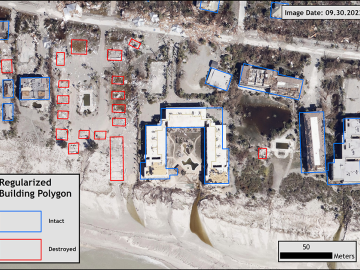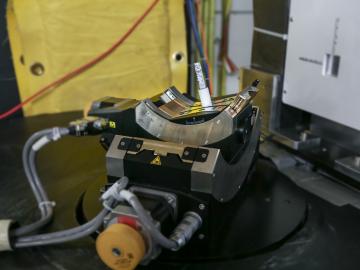
Filter News
Area of Research
- (-) Advanced Manufacturing (8)
- (-) National Security (37)
- (-) Neutron Science (130)
- Biology and Environment (125)
- Biology and Soft Matter (1)
- Building Technologies (2)
- Computational Biology (1)
- Computational Engineering (3)
- Computer Science (16)
- Electricity and Smart Grid (1)
- Energy Science (140)
- Energy Sciences (1)
- Functional Materials for Energy (1)
- Fusion and Fission (8)
- Fusion Energy (2)
- Isotopes (2)
- Materials (85)
- Materials for Computing (16)
- Mathematics (1)
- Nuclear Science and Technology (7)
- Quantum information Science (7)
- Supercomputing (143)
News Topics
- (-) Artificial Intelligence (19)
- (-) Computer Science (32)
- (-) Environment (13)
- (-) Frontier (2)
- (-) Machine Learning (16)
- (-) Neutron Science (120)
- (-) Polymers (1)
- 3-D Printing/Advanced Manufacturing (28)
- Advanced Reactors (3)
- Big Data (8)
- Bioenergy (11)
- Biology (11)
- Biomedical (16)
- Biotechnology (2)
- Buildings (1)
- Chemical Sciences (5)
- Clean Water (2)
- Composites (4)
- Coronavirus (12)
- Cybersecurity (20)
- Energy Storage (8)
- Exascale Computing (1)
- Fossil Energy (1)
- Fusion (3)
- Grid (6)
- High-Performance Computing (6)
- Hydropower (1)
- Materials (20)
- Materials Science (28)
- Mathematics (1)
- Microscopy (3)
- Nanotechnology (11)
- National Security (35)
- Nuclear Energy (9)
- Partnerships (5)
- Physics (10)
- Quantum Computing (1)
- Quantum Science (8)
- Security (12)
- Simulation (1)
- Space Exploration (4)
- Summit (7)
- Transportation (7)
Media Contacts

Paul Langan will join ORNL in the spring as associate laboratory director for the Biological and Environmental Systems Science Directorate.

While studying how bio-inspired materials might inform the design of next-generation computers, scientists at ORNL achieved a first-of-its-kind result that could have big implications for both edge computing and human health.

Neutron scattering techniques were used as part of a study of a novel nanoreactor material that grows crystalline hydrogen clathrates, or HCs, capable of storing hydrogen.

Having lived on three continents spanning the world’s four hemispheres, Philipe Ambrozio Dias understands the difficulties of moving to a new place.

Laboratory Director Thomas Zacharia presented five Director’s Awards during Saturday night's annual Awards Night event hosted by UT-Battelle, which manages ORNL for the Department of Energy.

Over the past seven years, researchers in ORNL’s Geospatial Science and Human Security Division have mapped and characterized all structures within the United States and its territories to aid FEMA in its response to disasters. This dataset provides a consistent, nationwide accounting of the buildings where people reside and work.

Oak Ridge National Laboratory researchers are developing a first-of-its-kind artificial intelligence device for neutron scattering called Hyperspectral Computed Tomography, or HyperCT.

Cameras see the world differently than humans. Resolution, equipment, lighting, distance and atmospheric conditions can impact how a person interprets objects on a photo.

When the COVID-19 pandemic stunned the world in 2020, researchers at ORNL wondered how they could extend their support and help

Scientists at ORNL used neutron scattering to determine whether a specific material’s atomic structure could host a novel state of matter called a spiral spin liquid.


